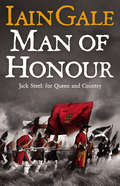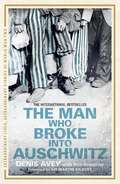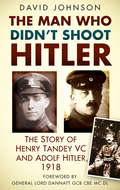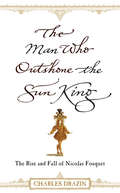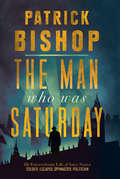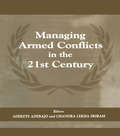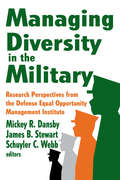- Table View
- List View
Man of Honor (Battle Scars #3)
by Diana Gardin"A sexy, brooding hero and a feisty, fierce heroine make for undeniable chemistry and scorching heat." --Jay Crownover, New York Times and USA Today bestselling author The best rules are the ones worth breaking . . . After his mother's funeral, ex-Army Ranger Drake Sullivan wants only to disappear and drown his sorrows in whiskey. Then he sees her: Mea Jones. An untamed, sexy-as-hell whirlwind of energy. A few years ago, she showed him the best-and hottest-night of his life, then walked away without a backward glance. But he's never stopped wanting more. When it comes to guys, Mea has rules. One night. No dating. Whatever it takes to have control and keep it. With Drake, it's all heat and hurt and hunger, and pretty much the opposite of control. And that makes him dangerous as hell. Mea has her own demons, and falling in love-or even in lust-is strictly a no-go proposition. But she soon finds out Drake is incredibly single-minded when it comes to getting what he wants. And he's determined to be the exception to all her rules. Reader advisory: The heroine's past deals with dark elements some readers may find disturbing. Recommended for mature audiences only. "Man of Honor is sweet and sexy in all the right places." --New York Times bestselling author J.B. Salsbury "Top Pick! Intense, passionate, and gritty...If you love your heroines strong, your heroes even stronger, and want a book that will keep you reading past your bedtime, Man of Honor is for you!" --Harlequin Junkie "Drake and Mea set the pages on fire! I was hooked from the very start!" --J.L. Berg, USA Today bestselling author "A heart wrenching story of the healing power of love. Gardin handles tough issues with sensitivity and poignant storytelling. Man of Honor will have you rooting for Drake and Mia and reaching for the tissues." --Marie Meyer, author of The Turning Point "An emotional, sexy, and touching read with two unforgettable and amazingly resilient characters. Man of Honor is an utterly devour-able book and I loved every second!" --Jillian Stein, READ-LOVE-BLOG
A Man of Honour
by Barbara Taylor BradfordThe prequel to the million-copy bestseller, A Woman of Substance, where, high on the Yorkshire moors, the story of Blackie O’Neill and Emma Harte begins…
Man of Honour: Man Of Honour, Rules Of War, Brothers In Arms
by Iain GaleThe first in a stunning new historical adventure series, perfect for all fans of Sharpe
Man of the House: A touching wartime saga of life when the men come home (Eileen Gilmoss series, Book 2)
by Joan JonkerThe war may be over, but for one young wife, her battles are only just beginning... Man of the House is a heart-breaking but ultimately uplifting saga of life after the war, in the second instalment of Joan Jonker's Eileen Gillmoss series. Perfect for fans of Dilly Court and Katie Flynn. On VE day, everyone was rejoicing and it seemed the whole population of Liverpool had turned out to celebrate. Eileen Gillmoss, a colourful character with a smile forever lighting up her face, was the life and soul of the party. Today was the day she'd prayed for and dreamed about. After five long, lonely years, her prisoner-of-war husband Bill would be coming home, back to the open, loving arms of his wife and children. But the man who comes back from the war is a complete stranger to her. It isn't only that Bill's appearance has changed. It's his remoteness, his flinching from her touch that Eileen can't cope with. Now, Eileen, who is always there to lend a shoulder to cry on, is the one in need. But who can she turn to? No one can give her what she craves most... her old husband back. She wants him back where he belongs, as the man of the house. What readers are saying about Man of the House: 'This book has everything you need for a good read. I couldn't put it down. With every page you turn you don't know whether you'll be laughing or crying by the end of the page. With the good description of the characters in the book you feel like you have known them all your life''Excellent... Joan Jonker never lets you down'
The Man on a Donkey
by H.F.M. Prescott'The most immersive book I've ever read... Truly brings Tudor England to life' Frank Cottrell Boyce, The Times'One of the finest historical novels ever written' TLSA forgotten literary masterpiece, The Man on a Donkey is less about the great figures who shape historical change and more about what it's like to live through it.This is a sweeping, immersive historical novel that invites the reader to inhabit Tudor history as it unfolds: Henry VIII's divorce from Catherine of Aragon; Robert Aske's rebels fighting the Dissolution of the Monasteries; the machinations of Cardinal Wolsey and Anne Boleyn.It is, quite simply, one of the finest historical novels ever written.'A masterpiece' Eamon Duffy'A classic of historical fiction... Captures all the poignant strangeness of the era' Hilary Mantel
Man, The State And War: A Theoretical Analysis (PDF)
by Kenneth N. Waltz Stephen M. WaltWhat are the causes of war? How might the world be made more peaceful? In this landmark work of international relations theory, first published in 1959, the eminent realist scholar Kenneth N. Waltz offers a foundational analysis of the nature of conflict between states. He explores works by both classic political philosophers, such as St. Augustine, Hobbes, Kant, and Rousseau, and modern psychologists and anthropologists to discover ideas intended to explain war among states and related prescriptions for peace. Waltz influentially distinguishes among three "images" of the origins of war: those that blame individual leaders or human nature, those rooted in states' internal composition, and those concerning the structure of the international system. With a foreword by Stephen M. Walt on the legacy and continued relevance of Waltz's work, this anniversary edition brings new life to a perennial international relations classic.
The Man Who Broke into Auschwitz: The Extraordinary True Story (Extraordinary Lives, Extraordinary Stories of World War Two)
by Denis Avey Rob BroombyTHE INTERNATIONAL BESTSELLERTHE MAN WHO BROKE INTO AUSCHWITZ is the extraordinary true story of a British soldier who marched willingly into Buna-Monowitz, the concentration camp known as Auschwitz III.In the summer of 1944, Denis Avey was being held in a POW labour camp, E715, near Auschwitz III. He had heard of the brutality meted out to the prisoners there and he was determined to witness what he could. He hatched a plan to swap places with a Jewish inmate and smuggled himself into his sector of the camp. He spent the night there on two occasions and experienced at first-hand the cruelty of a place where slave workers, had been sentenced to death through labour. Astonishingly, he survived to witness the aftermath of the Death March where thousands of prisoners were murdered by the Nazis as the Soviet Army advanced. After his own long trek right across central Europe he was repatriated to Britain. For decades he couldn't bring himself to revisit the past, but now Denis Avey feels able to tell the full story - a tale as gripping as it is moving - which offers us a unique insight into the mind of an ordinary man whose moral and physical courage are almost beyond belief.
The Man Who Broke Napoleon's Codes: The Story of George Scovell
by Mark UrbanIn 1812 two mighty armies manoeuvred across the Spanish plains. They were finely balanced, under skilful leaders. Each struggled to gain an advantage. Wellington knew that if he defeated the French, he could turn the tide of the war. Good intelligence was paramount, but the French were using a code of unrivalled complexity - the 'Great Paris Cipher'. It was an unprecedented challenge, and Wellington looked to one man to break the code: Major George Scovell. Using a network of Spanish guerrillas, Scovell amassed a stack of coded French messages, and set to work decrypting them. As a man of low birth, Scovell - even with his genius for languages, and bravery on a dozen battlefields - struggled for advancement amongst Wellington's inner circle of wealthier, better connected officers. Mark Urban draws on a wealth of original sources, including many cyphers and code-tables, to restore Scovell to his rightful place in history as the man who was the brains behind the intelligence battle against Napoleon's army and a forerunner of the great code-breakers of the 20th Century.
The Man Who Created the Middle East: The Life Of Sir Mark Sykes
by Christopher Simon SykesAt the age of only 36, Sir Mark Sykes was signatory to the Sykes-Picot agreement, one of the most reviled treaties of modern times. A century later, Christopher Sykes’ lively biography of his grandfather reassesses his life and work, and the political instability and violence in the Middle East attributed to it.
The Man Who Didn’t Shoot Hitler: The Story of Henry Tandey VC and Adolf Hitler, 1918
by David JohnsonThis is the tale of two men.The first is Henry Tandey, an ordinary man later deemed to be ‘a hero of the old berserk type’, born and brought up in Leamington Spa, Warwickshire, who displayed extraordinary courage to emerge from the First World War as the most decorated British private to survive. The second is Adolf Hitler, who was highly decorated in his service to Germany in the First World War and went on to become one of the most infamous dictators in history, later bringing the world to the brink of destruction during the Second World War. It seems unlikely that their fates should collide. Yet in 1938 Hitler named Tandey as the soldier who spared his life on 28 September 1918 in the aftermath of the Battle of Marcoing – an assertion that came as a surprise to Tandey himself. The Man Who Didn’t Shoot Hitler tells the story of Tandey’s and Hitler’s Great War, the moment when their lives became intertwined – if in fact they did – and how Tandey lived with the stigma of being known not for his chestful of medals for gallantry in service of King and Country, but as the man who let Hitler live.
The Man Who Invented the Third Reich (History Press Ser.)
by Stan LauryssensArthur Moeller van den Bruck was a prolific writer, historian, art critic, translator and publisher; the quintissential Bohemian fin-de-siecle artist. In the turbulent years that followed the end of the First World War, he became politically active as the leader of the young conservative revolutionaries in Weimar Germany. Moeller van den Bruck expressed his ideas for a German authoritarian state in his major work Das Dritte Reich (The Third Reich), first published in 1923. Adolf Hitler was profoundly influenced by the ideas that Das Dritte Reich and regarded himself as the activist who could implement them. As Moeller van den Bruck watched Hitler become the personification of the violent dynamism he had recommended in his book, he anticipated the horrors to come and saw no way out by to commit suicide. This remarkable biography gives a compelling insight into the tragic life of Moeller van den Bruck and uses personal interviews with contemporaries such as Kafka, Munch and Dietrich to explore the political and artistic whirlpools of Weirmar Germany in which he lived.
The Man Who Murdered Admiral Darlan: Vichy, the Allies and the Resistance in French North Africa (Routledge Studies in the Modern History of France)
by Bénédicte Vergez-ChaignonIn November 1942 Anglo-American forces landed in French North Africa, which soon afterwards broke with Marshal Pétain’s Vichy regime in France and re-entered the war on the Allies’ side. On Christmas Eve the high commissioner Admiral François Darlan was assassinated in Algiers. Why? Like the press and public opinion in Britain and America, General Charles de Gaulle’s Free French movement and the resistance in France were appalled that the Allies had allowed Darlan to retain office, even though as prime minister under Pétain he had previously advocated military collaboration with Nazi Germany. Few mourned Darlan’s death, many were relieved, some were jubilant. His killer was Fernand Bonnier de la Chapelle. Who was this twenty year old and what drove him to murder? Bénédicte Vergez-Chaignon paints a sympathetic portrait of the young idealist manipulated by local resistance leaders. As she tells Bonnier’s story, the author illuminates the imbroglio of North Africa’s competing political forces. She traces Bonnier’s short life, the assassination, his court-martial and execution within 48 hours, the subsequent judicial investigations which became bogged down in the complex rivalry between the Allies, the remnants of the Vichy regime, the Resistance and other factions. The story ends with Bonnier’s posthumous rehabilitation and recognition as a member of the French Resistance. Bonnier’s biography reads like an absorbing novel, with its twists and turns, reconstructed dialogue and author’s acute observations. As well as being a tragic human story, It is an illuminating study of the convoluted political context of the affair, which will be unfamiliar to some Anglophone readers. It is an academically rigorous piece of original research, based in part on previously inaccessible family archives Bénédicte Vergez-Chaignon’s story of Darlan’s assassination was received in France as * ‘a shocking book and a historian’s great work’ (Le Patriote Résistant) * ‘a detailed enquiry … bordering on a detective novel which brings out the conspiratorial atmosphere reigning in Algiers in the wake of the Allied landing of 8 November 1942’ (Le Monde des Livres) * it ‘shows the extent to which the 1940s were years of complete ambiguity’ (Le Figaro Littéraire) * ‘Bénédicte Vergez-Chaignon, a meticulous historian, paints the portrait of a young idealist dying to wash away the stain of defeat’ (Midi Libre).
The Man Who Murdered Admiral Darlan: Vichy, the Allies and the Resistance in French North Africa (Routledge Studies in the Modern History of France)
by Bénédicte Vergez-ChaignonIn November 1942 Anglo-American forces landed in French North Africa, which soon afterwards broke with Marshal Pétain’s Vichy regime in France and re-entered the war on the Allies’ side. On Christmas Eve the high commissioner Admiral François Darlan was assassinated in Algiers. Why? Like the press and public opinion in Britain and America, General Charles de Gaulle’s Free French movement and the resistance in France were appalled that the Allies had allowed Darlan to retain office, even though as prime minister under Pétain he had previously advocated military collaboration with Nazi Germany. Few mourned Darlan’s death, many were relieved, some were jubilant. His killer was Fernand Bonnier de la Chapelle. Who was this twenty year old and what drove him to murder? Bénédicte Vergez-Chaignon paints a sympathetic portrait of the young idealist manipulated by local resistance leaders. As she tells Bonnier’s story, the author illuminates the imbroglio of North Africa’s competing political forces. She traces Bonnier’s short life, the assassination, his court-martial and execution within 48 hours, the subsequent judicial investigations which became bogged down in the complex rivalry between the Allies, the remnants of the Vichy regime, the Resistance and other factions. The story ends with Bonnier’s posthumous rehabilitation and recognition as a member of the French Resistance. Bonnier’s biography reads like an absorbing novel, with its twists and turns, reconstructed dialogue and author’s acute observations. As well as being a tragic human story, It is an illuminating study of the convoluted political context of the affair, which will be unfamiliar to some Anglophone readers. It is an academically rigorous piece of original research, based in part on previously inaccessible family archives Bénédicte Vergez-Chaignon’s story of Darlan’s assassination was received in France as * ‘a shocking book and a historian’s great work’ (Le Patriote Résistant) * ‘a detailed enquiry … bordering on a detective novel which brings out the conspiratorial atmosphere reigning in Algiers in the wake of the Allied landing of 8 November 1942’ (Le Monde des Livres) * it ‘shows the extent to which the 1940s were years of complete ambiguity’ (Le Figaro Littéraire) * ‘Bénédicte Vergez-Chaignon, a meticulous historian, paints the portrait of a young idealist dying to wash away the stain of defeat’ (Midi Libre).
The Man who Never Was: The Remarkable Story of Operation Mincemeat
by Ewen MontaguIn the early hours of 30 April 1943, a corpse wearing the uniform of an officer in the Royal Marines was slipped into the waters off the south-west coast of Spain. With it was a briefcase, in which were papers detailing an imminent Allied invasion of Greece. As the British had anticipated, the supposedly neutral government of Fascist Spain turned the papers over to the Nazi High Command, who swallowed the story whole. It was perhaps the most decisive bluff of all time, for the Allies had no such plan: the purpose of ‘Operation Mincemeat’ was to blind the German High Command to their true objective – an attack on Southern Europe through Sicily. Though officially shrouded in secrecy, the operation soon became legendary (in part owing to Churchill’s habit of telling the story at dinner). Ewen Montagu was the operation’s mastermind, and in his celebrated post-war memoir, The Man who Never Was, he reveals the incredible true story behind ‘Operation Mincemeat’.
The Man Who Outshone The Sun King: A Life Of Gleaming Opulence And Wretched Reversal In The Reign Of Louis Xiv
by Charles DrazinSometime late in 1664, the musketeer D'Artagnan rode beside a heavily-armoured carriage as it rumbled slowly southwards from Paris, carrying his great friend Nicolas Fouquet to internal exile and life imprisonment in the fortress of Pignerol. There he would be incarcerated in a cell next door to the Man with the Iron Mask...From a glittering zenith as the King's first minister, builder of the breathtaking chateau of Vaux-le-Vicomte, collector of books, patron of the arts and lover of beautiful women, Fouquet had fallen like Icarus. Charged with embezzlement, he was convicted and sentenced to banishment until the King intervened to change his sentence to life imprisonment.Charles Drazin's riveting account brings to life the rich and hazardous world in which Foucquet lived. As a child he learned from his devout mother how to mix herbal remedies for the patients at the Hotel-Dieu and from his father, a creature of Cardinal Richelieu, the demands of political life. Drazin tells of the young man's first adventures as a tax-collector, caught up in rebellion in the Dauphiné , of the loyalty and service that he gave to Cardinal Mazarin and of the financial wizardry that somehow kept France's finances together. The cunning, charisma and charm of Fouquet enchant and beguile while they reveal the seeds of his destruction. But it is in his downfall and incarceration, which he bore with great fortitude, courage and humour, that Fouquet's strength of character and grace emerge, as he somehow survives both solitary confinement and absence of books, pen and ink. The richness and contrasts of his remarkable story are done full justice in this compelling book.
The Man Who Saw Too Much: David Brill, combat cameraman
by John LittleThis is the story of David Brill, one of the very best of Australian cameramen - past and present. He is in the same company as Damien Parer and Neil Davis.Over the past forty years he has covered wars and disasters all over the world. He filmed the fall of Saigon. He was in Moscow during the collapse of communism. He has covered countless other conflicts and natural disasters in Asia, Africa and North and South America.He has been single-mindedly dedicated to the pursuit of his craft: to get the story, get the film - always to preserve and present the human dimension, no matter how large or mindless the conflict or event.David Brill has paid a high price for this uncompromising style. He has two failed marriages, and at times has been overcome by demons such as alcohol. This biography is also a great adventure story, a journey through war zones and various hell holes of the world. And it is an inside look at what makes some people follow a profession where their life is on the line - as a standard feature of their day.
The Man Who Was Saturday: The Extraordinary Life Of Airey Neave
by Patrick BishopSOLDIER, ESCAPER, SPYMASTER, POLITICIAN – Airey Neave was assassinated in the House of Commons car park in 1979. Forty years after his death, Patrick Bishop’s lively, action-packed biography examines the life, heroic war and death of one of Britain’s most remarkable 20th century figures.
The Man Who Was Saturday
by Derek LambertA classic Cold War spy story from the bestselling thriller writer Derek Lambert.
The Man With the Iron Heart: The Definitive Biography of Reinhard Heydrich, Architect of the Holocaust
by Nancy DoughertyA fascinating portrait of Reinhard Heydrich, one of the darkest figures of Hitler's elite, featuring words with those who knew him best, including in-depth and rare interviews with his wife, Lina. He was called the 'Hangman of the Gestapo' and the 'Butcher of Prague'. He had a reputation as a ruthlessly efficient killer and was known as an exemplar of Nazi ideals. He was the head of the SS and the Gestapo, second in command to Heinrich Himmler and supposedly in line to succeed the Fuhrer.His orders set in motion the Kristallnacht pogrom of 1938 and he was the lead planner of the Final Solution, which led to the murder of millions of Jews across Nazi-occupied Europe.Hitler called him 'the man with the iron heart'.This incredible biography explores who Reinhard Heydrich was, how he came to be and what led him to do what he did.Using in-depth research, Nancy Dougherty (and, following her death, Christopher Lehman-Haupt), paint a detailed picture of Heydrich as never seen before. Through extensive interviews with those who knew him best, including his wife Lina von Osten Heinrich, we hear about his rarefied musical family origins and ugly-duckling childhood, his failed Naval career and struggles to find employment, and finally his meteoric rise through the Nazi high command and his time within the Third Reich.The Man With the Iron Heart is an astonishing journey into the depths of Nazi evil and a powerful insight into one of humanity's darkest figures.
Managing Armed Conflicts in the 21st Century
by Adekeye Adebajo Chandra Lekha SriramProduced with the International Peace Academy in New York, this volume focuses largely on the conflicts of the 1990s and future projects, examining multifacteted issues involved in conflict management, suggesting new approaches and tools for future conflict management.
Managing Armed Conflicts in the 21st Century
by Adekeye Adebajo Chandra Lekha SriramProduced with the International Peace Academy in New York, this volume focuses largely on the conflicts of the 1990s and future projects, examining multifacteted issues involved in conflict management, suggesting new approaches and tools for future conflict management.
Managing Command and Control in the Persian Gulf War (Non-ser.)
by Thomas C. Hone Mark D. Mandeles Sanford S. TerryDuring Desert Shield, the Air Force built a very complicated organizational architecture to control large numbers of air sorties. During the air campaign itself, officers at each level of the Central Command Air Forces believed they were managing the chaos of war. Yet, when the activities of the many significant participants are pieced together, it appears that neither the planners nor Lt. Gen. Charles A. Horner, the Joint Force Air Component Commander, knew the details of what was happening in the air campaign or how well the campaign was going. There was little appreciation of the implications of complex organizational architectures for military command and control. Against a smarter and more aggressive foe, the system may well have failed.
Managing Diversity in the Military: Research Perspectives from the Defense Equal Opportunity Management Institute
by Mickey R. DansbyAlthough diversity is a twentieth-century term, as the United States continues through the twenty-first century, the issue of diversity in society and in organizations is becoming more complex. Managing Diversity in the Military addresses current equal opportunity and diversity issues and explores how the military is attempting to resolve them.The research presented reflects interests of scholars from various backgrounds who use different models, approaches, and methodologies, many of which are adapted from the study of civilian institutions. The work is divided into five sections ""Contemporary Approaches to Managing Diversity,"" ""Diversifying Leadership: Equity in Evaluation and Promotion,"" ""Gender Integration and Sexual Harassment,"" ""Military Discipline and Race,"" and ""Where Do We Go from Here?"" which proposes future research directions for equal opportunity and diversity management in the armed forces.All of the areas explored in this accessibly written volume have counterparts in the civilian sector. The book offers insights, practical methodologies, and effective management guidelines for commanders, civilian-sector executives, and human resource practitioners responsible for equal opportunity programs and outcomes. This is now the standard social research tool in an area of profound practical concerns.
Managing Diversity in the Military: Research Perspectives from the Defense Equal Opportunity Management Institute
by James StewartAlthough diversity is a twentieth-century term, as the United States continues through the twenty-first century, the issue of diversity in society and in organizations is becoming more complex. Managing Diversity in the Military addresses current equal opportunity and diversity issues and explores how the military is attempting to resolve them.The research presented reflects interests of scholars from various backgrounds who use different models, approaches, and methodologies, many of which are adapted from the study of civilian institutions. The work is divided into five sections ""Contemporary Approaches to Managing Diversity,"" ""Diversifying Leadership: Equity in Evaluation and Promotion,"" ""Gender Integration and Sexual Harassment,"" ""Military Discipline and Race,"" and ""Where Do We Go from Here?"" which proposes future research directions for equal opportunity and diversity management in the armed forces.All of the areas explored in this accessibly written volume have counterparts in the civilian sector. The book offers insights, practical methodologies, and effective management guidelines for commanders, civilian-sector executives, and human resource practitioners responsible for equal opportunity programs and outcomes. This is now the standard social research tool in an area of profound practical concerns.
Managing Domestic Dissent in First World War Britain (British Politics and Society)
by Brock MillmanThe author argues that the way the British Government managed dissent during World War I is important for understanding the way that the war ended. He argues that a comprehensive and effective system of suppression had been developed by the war's end in 1918, with a greater level in reserve.


